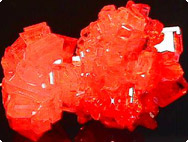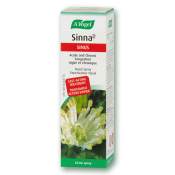A.Vogel search
When the internal search is activated, personal data such as your IP address is transmitted to our search engine Cludo. Data is thus transferred to a third country. Please click here if you want to display the internal search. You can find more information on data protection here: Privacy policy.
Kalium bichromicum
Potassium dichromate
History

Chromium (Cr) was discovered by Vauquelin in 1797. The name chromium comes from the Greek word, chroma meaning ’colour‘. Larger deposits of chromium ore, chromite or chromium iron ore can be found in India, South Africa, Russia, New Zealand and Turkey.Potassium dichromate is produced synthetically and was at one time used at dyeing plants as an oxidising agent for aniline dyes; as a bleaching agent in the tanning of leather; for paints such as chrome yellow, orange, red and green; it was used to produce chromate elements in batteries as well as in photography. Potassium dichromate was used medicinally as an astringent, an antiseptic, as a caustic agent in the treatment of warts and as a dusting powder for sweaty feet. Use of this highly toxic substance led to cases of poisoning, which were accompanied by infections of the nasal mucous membrane and its disintegration, painless perforation of the nasal septum, increased salivation accompanied by ulcers on the tonsils, the throat, the uvulae and along the entire digestive tract and in addition neuralgic pain.Stout, fair-haired people working in English factories were particularly susceptible to the harmful effects of potassium dichromate. The number of cases of chromate poisoning in industrial environments came to the attention of a homoeopath, Dr JJ Drysdale. He conducted tests on this substance and introduced it to homoeopathic medical annals in 1844. The Austrian homoeopath Arneth's Physiological Examination of Potassium Dichromate which involved 14 examiners and potencies ranging from D1 to C12 conducted in 1847 still forms the basis of what we know about the medicine today.
Physical Characteristics
Potassium dichromate, which has the molecular formula K2Cr2O7, forms large orange-red, odourless, prismatic crystals. These crystals dissolve slightly in cold water, much better in warm water but not at all in alcohol. The watery solution has a slightly acidic reaction. It is a strong oxidising agent. The toxicity of the substance should be particularly stressed: a dose of between 0.5g and 1g is fatal. Its molecular weight is 294.2.
Occurence
Potassium dichromate does not occur naturally. It is produced synthetically in large amounts and obtained electrolytically, whereby sodium dichromate solution is mixed with potassium chloride according to the formula Na2Cr2O7 + 2KCl = K2Cr2O7 + 2 NaCl.
Preparation
A.Vogel/Bioforce uses a homoeopathic trituration made from pure potassium dichromate in accordance with the current Homöopathisches Arzneibuch (HAB) (New Official German Homoeopathic Pharmacopoeia).
A.Vogel Blog – Natural and Healthy
Inspiration for a healthy life!




